Selective laser sintering or SLS 3D printing is a popular technology used by many businesses, hobbyists, and inventors who desire quality 3D printed parts. The process involves using a laser beam controlled by the CAD model to fuse powdered material, which produces a 3D printed model.
SLS printing is unique. However, it requires a heightened knowledge and understanding for better use. This article will answer the question what is selective laser sintering by introducing the SLS 3D printing concept. It will then discuss the process and how you can apply it to your project. Read on!
Overview: What is SLS Printing?
SLS printing is a technology that involves fusing powdered materials using a laser to form a rigid 3D model. Most businesses prefer it due to its high precision and suitability for making geometrically complex products.
Brief History of SLS Printing
Carl Deckard and Joe Beaman, student, and professor of Mechanical Engineering at the University of Texas, developed the SLS AM technology. The method is a powder bed fusion technology (i.e., it involves using thermal energy to fuse regions of a powder bed selectively) and was patented in 1980.
Due to massive improvement in the method, it is suitable for many materials such as plastics, ceramic, and glass. Consequently, it has a widespread adoption like Stereolithography and Fused Deposition Modeling Process even though it is expensive and complex.
How Does SLS 3D Printing Work?
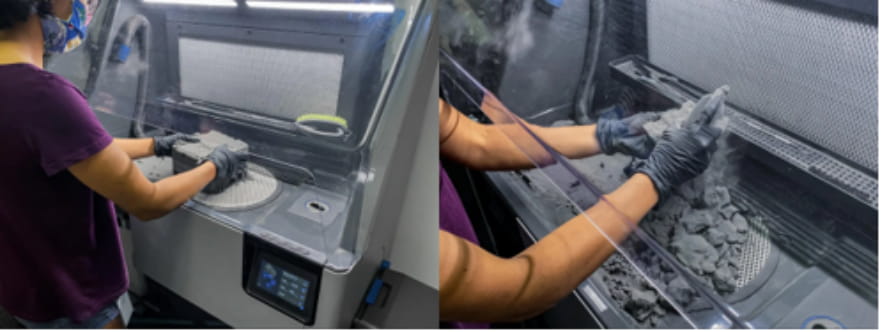
SLS 3D printing is a unique technology known for accuracy, precision, and quality 3D printed parts. Below is a step-by-step guide on how it works:
Prepare CAD Files
Design a CAD file using CAD software and export it in a 3D printable file format (e.g., OBJ or STL). Specify the printing settings, orientation and arrangement of models, estimates of print times, and slicing. After preparing the CAD files, send the instructions to the printer.
Prepare The Printer
Preparing the 3D printer depends on the type of printer you are using. You might need extensive training for traditional SLS 3D printers to prepare them. For a benchtop SLS printer, you have something simple and efficient.
Printing
The operator deposits the powdered material on the platform (powder bed) located in the build chamber. The SLS 3D printer then sinters the powder using the laser at specific parts of the platform under the control of the CAD design.
This creates the solid 3D printed part in a mass of unfused powder materials. After fusion, the platform lowers by one layer to the build chamber, and the process repeats itself.
Cooling
The build chamber slowly cools down inside and outside the print enclosure to ensure the optimal mechanical performance of the 3D model.
Post-Processing
The operator removes the finished part from the build chamber and separates it from unfused powder materials. The unfused powder materials are recyclable, and the 3D printed model can be subjected to post-processing processes.
Advantages of SLS Printing
SLS 3D printing is a popular technology in several industries based on its advantages. Below are a few advantages of the process.
No Need for Support Structures
SLS doesn’t require specialized support structures, unlike other additive manufacturing processes, e.g., stereolithography (SLA) and fused deposition modeling (FDM). This is because of the unsintered powder that is present during printing.
Ability to Make Complex Designs
Due to the support structure, SLS 3D printing is suitable for making highly complex designs. With the technology, designers can explore and unleash different possibilities for design not possible with the traditional process. Another unique SLS advantage design-wise is that the designer can consolidate complex assemblies requiring multiple parts into one.
High Productivity
SLS 3D printing is one of the fastest additive manufacturing technology without a loss in the functionality of the finished part. Compared to layer deposition methods such as FDM, the process is also very accurate.
Productivity is high due to the maximization of the 3D printer’s build space which allows it to work with multiple parts. This will also post-processing time.
Competitive Cost Per Part
The cost per part of using a process is only possible after accounting for equipment ownership, material, and labor costs. SLS 3D printing have a lesser cost per part due to the following
- It can produce more parts over its entire lifetime.
- It minimizes wastage of laser sintering powder materials as the unsintered materials are recyclable.
- There is automation in its workflow, which reduces human errors and improves productivity.
Easy Modification of Design
SLS printing allows easy modification of design. Therefore, designers can make prototypes and end-use parts using the same machine and materials. This ease of modification ensures lesser cost and time consumption, unlike the traditional processes.
Disadvantages of SLS Printing
Even though SLS additive manufacturing is popular among several industries, it also has disadvantages. Below are a few you need to take note of:
Limitation In Raw-Material
The is a restriction on the types of materials suitable for SLS AM. The technology is suitable for plastic polymers, ceramics, and glass, with nylon most common. Therefore, for those that value SLS advantages, the limitation of raw material can be restrictive.
Health Factors
The raw material used in SLS printing is powdered form and can be inhaled if care is not taken. This can lead to several health conditions such as asthma and cancer. Also, manufacturers have to spend a lot to ensure that operators adorn themselves with wearing gloves, an air filter mask, and other proper body covering.
Cost of SLS Printers
Generally, SLS printers have a high cost. Although the benchtop SLS printer is less costly than the traditional ones, the price is high compared to other technologies such as SLA and FDM.
Difficult Post Processing
The SLS 3D printed parts have a rough texture and are applicable for mechanical and testing purposes. Their complex design and texture make choosing the right post-processing method difficult. For example, dyeing is preferable to paint due to its ease of operation. However, dyeing can also increase the part dimension, making it unsuitable for finishing products where the dimension should be intact.
Materials of Selective Laser Sintering

SLS materials are always powdered form, and they include plastic polymers, ceramic, and glass. Of the many materials, polyamides/nylons are the most common due to their ideal sintering behavior and mechanical properties (e.g., durability, environmental stability, and impact resistance). Many variants are used in SLS printing, each suitable for different industries. Below are variants you can apply to your project.
Nylon 11
Nylon 11 is made from castor oil. It has higher ductility, flexibility, strength, impact resistance, chemical resistance, low absorption, and wear and tear. Consequently, it is ideal for making parts that require a living hinge, e.g., jigs and fixtures, snaps, clips, and hinges.
Nylon 12
Nylon 12 is the more common SLS 3D printing material known for its versatility, high impact and temperature resistance, durability, and stability under various environmental conditions. It also has great details and dimensional accuracy making it the right material in high-performance prototyping. It is also stiff and tough but is slightly rougher than other nylons and is applicable in making permanent jigs, fixtures, and tooling.
Nylon 12 GF
Nylon 12 GF is a glass-filled composite SLS 3D printing material. It has excellent mechanical stiffness, superior dimensional stability, thermal stability, and a nice surface finish making it suitable for several industrial environments.
Aluminium-Filled Nylon
Aluminum Filled Nylon is suitable for parts with a high metallic shine. Due to the aluminum part, it is stiff and has high thermal conductivity. However, it is not electrically conductive. The material is suitable for rapid tooling and fixtures.
Carbon-Fiber Filled Nylon (PA-FR)
Carbon-Fiber-Filled nylon is a material known for its stiffness and low weight. It is suitable for making products applicable in high elevated temperatures or high-performance situations. These include making sports equipment, rapid tooling, drones, and racing.
Post-processing Options of SLS Printing
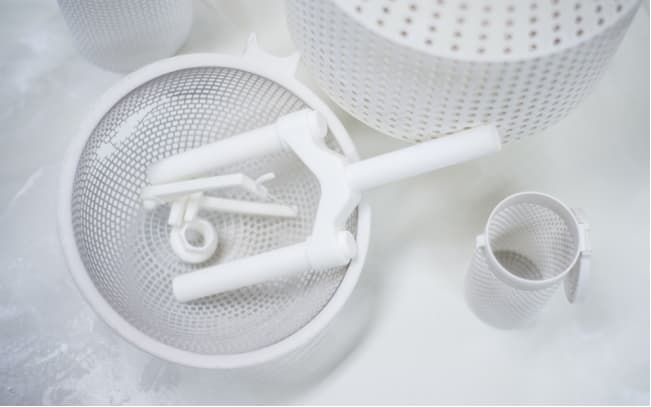
After printing, you can directly use the SLS 3D printed parts. However, you can also subject the printed parts to other post-processing options for better aesthetics or functionality. Common post-processing options include:
Bead Blasting
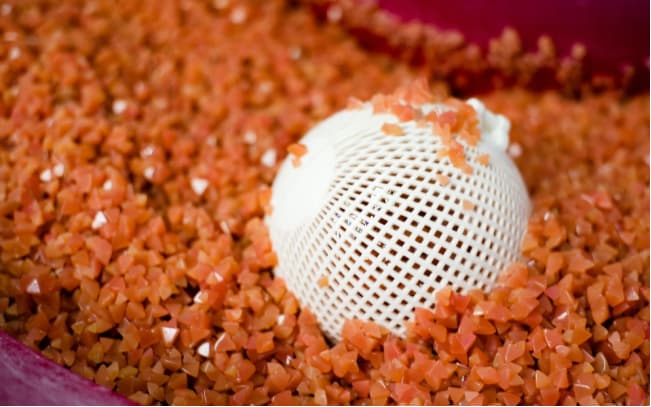
Bead blasting is a common post-processing method that involves propelling abrasive materials against a surface. The materials involved are glass or plastic ‘beads’ suitable for achieving a smooth surface or deburring the material’s surface. There is a slight change in the part dimension on subjection to bead blasting. Consequently, it is not suitable for parts where details are important.
Polishing
Polishing is another post-processing method to achieve a 3D printed part with a smooth and shiny surface. It involves cleaning the surface and applying a chemical treatment. Polishing is more important in aesthetics. For example, the automotive industry uses it to achieve significant specular reflection.
Electroplating
Electroplating is a process that involves coating the sintered part using another metal via an electrochemical setup. Here, the sintered part is the cathode, while the coating metal is the anode. Both are immersed in a solution and on passing a direct current, the metal coats the sintered part. 3D printed parts subjected to electroplating becomes electrically conductive with improved strength and functionality. Depending on the material used for coating, it can also become aesthetically appealing.
Dyeing
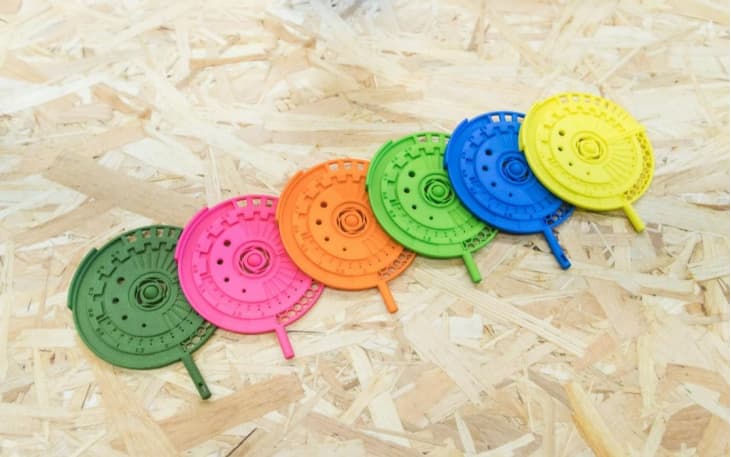
Dyeing involves applying dyes or pigments on the 3D printed part to achieve aesthetics. The printed part is cleaned and immersed in a dye container. Depending on the types of dyes, you might need an adhesive. Dyeing leads to full coverage of the internal and external surface and penetrates the part down to a depth. When used, it can increase the part dimension, making it unsuitable for products that require keeping the part dimension in check.
Painting
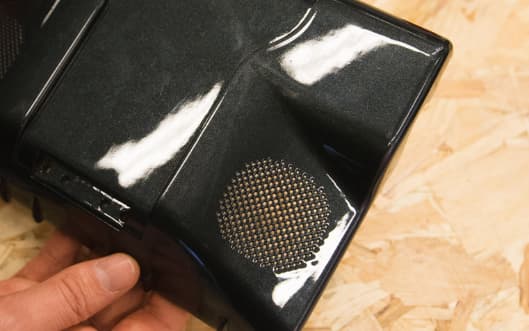
Painting involves applying several substances such as pigment, paint, or color to a 3D printed part. SLS 3D printed parts can be painted with wear resistance, surface hardness, water tightness, and limit marks and smudges. Painting also increases the part dimension. Therefore, it can be unsuitable for products that require keeping the part dimension in check important.
Types of SLS Printers
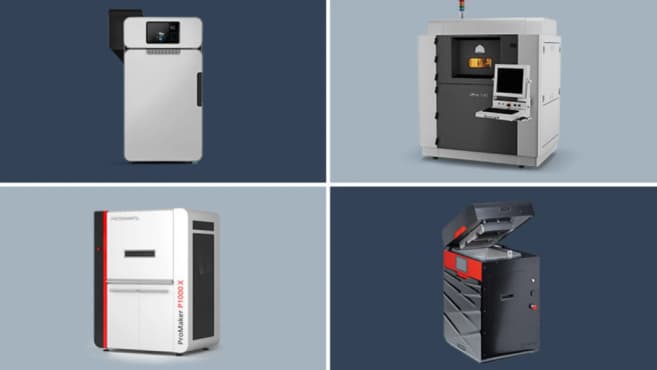
All SLS printers work based on the previously highlighted procedures. However, there are differences based on their laser type, build volume, and 3D design. There are many types of SLS printers in the market. However, they are majorly divided into two categories, namely:
· Traditional Selective Laser Sintering 3D Printers
Traditional SLS 3D printers are the right printers for service bureaus and large enterprises due to their high price and high build volume. They use single or multiple high-power lasers for sintering and require an inert environment to prevent oxidation and degradation of the powdered material.
Traditional SLS 3D printers take a large amount of space, with the smallest one taking up about 10m² space. They also have a high cost, with starting price being around $100,000. Consequently, they are not accessible by many businesses.
· Benchtop Industrial Selective Laser Sintering Printers
Benchtop industrial SLS printers are unlike traditional ones as there is a trade-off in their capability. Trade-offs can be lower part quality and complex, manual workflows, which will affect their use in industrial and production settings. They have a small size compared to traditional printers but with a smaller build volume. Nevertheless, they produce high-quality parts.
Industrial Applications of SLS Printing
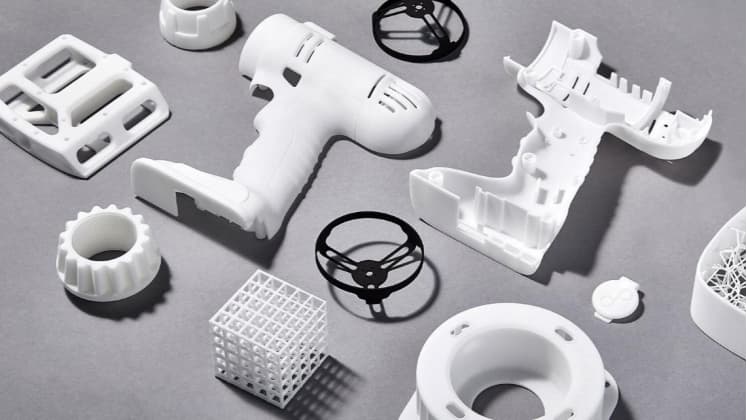
SLS 3D printing is a common process used in product development in many industries. Below are a few industries using the technology and examples of its industrial applications.
· Aerospace Industry
Some parts used in the aerospace industry are commonly manufactured by SLS 3D printing technology. Airlines such as Emirate use the technology to make aircraft’s interior parts and cabin components such as video monitoring shrouds and air vent grills
· Automotive Industry
SLS printing technology allows innovation in the automotive industry. For example, car designers can improve car designs at a better speed than other traditional technologies in motorsports. This is seen in the way Alfa Romeo leverage SLS 3D printing in the aerodynamic development of their cars.
· Consumer Industry
The consumer industry also uses SLS printing in making several products. For example, luxury consumer company Chanel uses SLS technology in making mascara brushes. With the technology, Chanel was able to optimize the mascara brush design.
Other applications include the use in footwear products where companies such as Adidas use the technology for producing customized insoles and sandals.
· Healthcare
SLS 3D printing produces parts known for enhanced rigidity, a common property needed in the health care industry. Here, it is suitable for making ready-to-use, patient-specific medical devices in-house. These include prosthetics and orthotics (i.e., limb replacements + braces) and surgical models and tools.
RapidDirect – SLS Printing Service
Selective laser sintering is popular among many industries based on precision, accuracy, productivity amidst other benefits. Mastering the technology can only come with a research-loving mind. Therefore, the article introduced the concept in the simplest way possible. The method is straightforward; however, outsourcing to the right service is the right approach to experience the best selective laser sintering process.
RapidDirect SLS printing service is one of the best SLS services you can find. With our team of well-experienced engineers in the technology, you stand a better chance to have a hitch-free and quality assured project.
We are an ISO 9001:2015 certified company with the resources to manufacture high-quality parts using SLS. By outsourcing to us, you get to enjoy a fast lead time, quote, and DfM analysis as soon as you upload your design file.
FAQs
Yes, you can use SLS 3D printing for low-production runs. Currently, it is an alternative to injection molding for low-production runs. Here, the technology is suitable for manufacturing parts with complex shapes and geometries.
Yes, you can use SLS 3D printing to prototype functional polymers rapidly. It is better than other techniques such as FDM and SLA due to its high degree of design freedom and accuracy. Consequently, parts made with the technology have good and consistent mechanical properties.
SLS printing and SLM printing are two popular 3D printing technologies with unique properties and functions. SLS involves using a laser to fuse powdered material by raising the materials to a temperature below their melting point. It is compatible with plastic polymers such as nylon, glass, and ceramics. On the other hand, SLM fuses powdered materials by raising them to their melting point. It is suitable for metallic materials.
The main disadvantage manufacturers face while using the process is the limitation of raw materials. Currently, the method is only suitable for plastic polymers such as PA-11, PA-12, PEEK. Therefore, the process and its benefits are not suitable for other materials such as metals which are more common in manufacturing.


